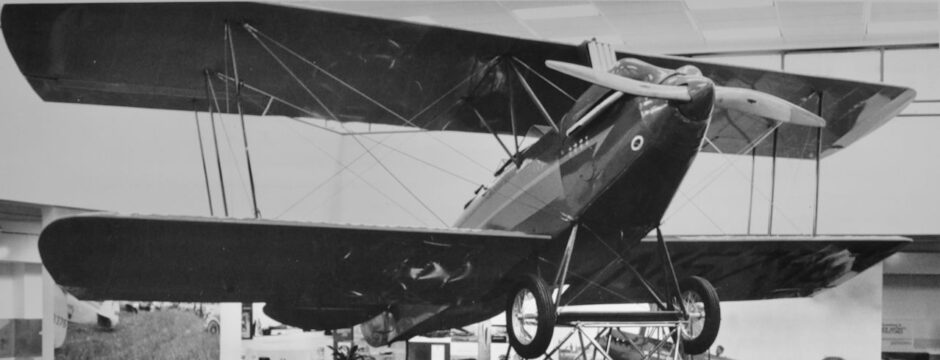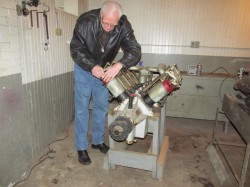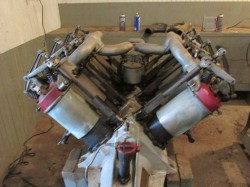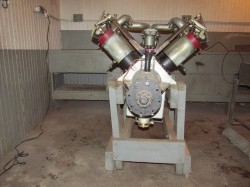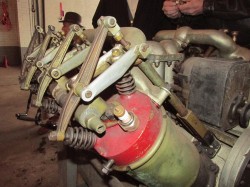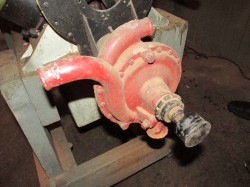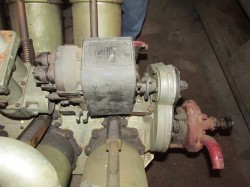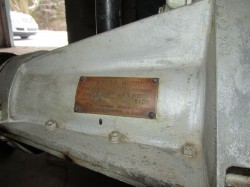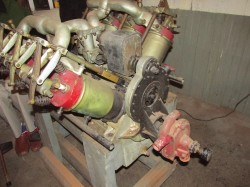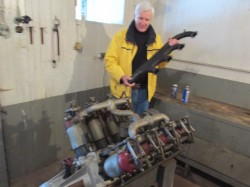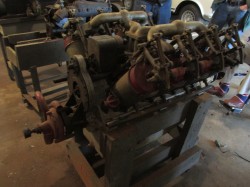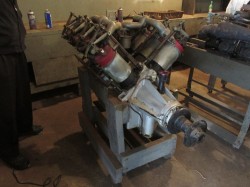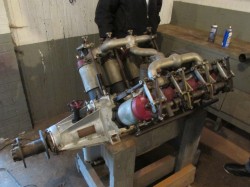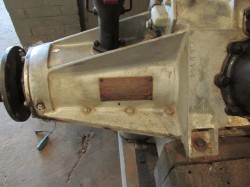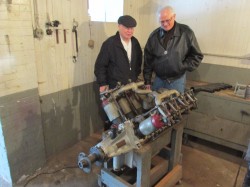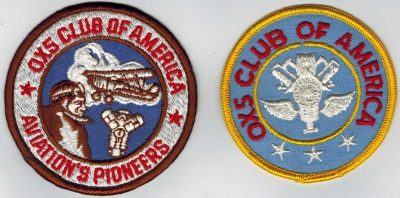- Cliff Yerkey, CBW President
- Dennis G Yerkey, CBW Sec
- Tom Mains & Cliff Yerkey, Pres
From: Clifford J Yerkey, President
Cliff Ball Wing-Pittsburgh
Cliff Ball Wing Members are shown investigating the very complete OX5 engine no. 1863 with a double struck 8 on the plate. The engine is hidden away in a Pittsburgh carriage house.
At the scene: Cliff Yerkey, Pres CBW; Dennis Yerkey, Sec; Tom Mains, member.
The OX-5 was not considered particularly advanced, nor powerful, for its era. By this time, rotary engines such as the Oberursel or Gnome-Rhone were producing about 100 hp, and newer engines such as the Mercedes six cylinder inline were becoming available with 160 hp or more. Nevertheless the OX-5 had fairly good fuel economy as a result of its slow RPM, which made it useful for civilian aircraft. The OX-5 was used on the Laird Swallow, Pitcairn PA-4 Fleetwing II, Travel Air 2000, Waco 9 and 10, the American Eagle, the Buhl-Verville CW-3 Airster, and some models of the Jenny. The primary reason for its popularity was its low cost after the war, with almost-new examples selling as low as $20. It was often used in boats as well as in aircraft. It took America many years to rise to the top of the world’s aircraft engine producers thanks to our great engineering capability. But, it was the lowly OX-5 which led the way.
Specifications: Curtiss OX-5
Type: 8-cylinder water-cooled 90° Vee piston engine
- Bore: 4.0 in
- Stroke: 5.0 in
- Displacement: 503 in³
- Length: 56.75 in
- Width: 29.75 in
- Height: 36.75 in
- Dry weight: 390 lb
Components
- Valve train: One intake and one exhaust valve per cylinder, pushrod-actuated
- Fuel system: Duplex Zenith Carburetor
- Oil system: Gear-pump 40 to 60 psi 3-gallon sump
- Cooling system: Water-cooled
Performance
- Power output:
- Specific power: 0.21 hp/in³
- Compression ratio: 4.9:1
- Fuel consumption: 8.0 US gal/h at 75% power
- Oil consumption: 0.5 US gal/h at 75% power
- 90 hp at 1,400 rpm
- 105 hp at 1,800 rpm for brief periods
